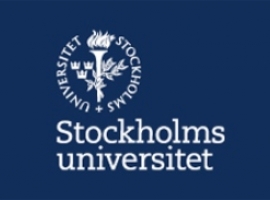
Partner 7: Stockholm University (SU), Sweden
With over 5200 employees, 1800 doctoral students and 50000 undergraduate and master students, Stockholm
University is one of the largest universities in Sweden. The new Department of Ecology, Environment and Plant
Sciences (EMB) has a staff of around 180 people, including senior scientists, postdocs, postgraduates and technical staff. The research focus is on marine and brackish water ecosystems, plant sciences, and environmental disturbances, including pollution. EMB is well set up for experimental work using aquatic organisms and plants. The ecotoxicology group‟s research covers both the fate and effect of contaminants, including radionuclides, with a strong focus on realistic environmental scenarios. The Radioecology Research Group at EMB is a partner in the STAR Network of Excellence in Radioecology. The Department of Molecular Biosciences, The Wenner-Gren Institute (MBW)) has a research staff of about 170 persons including senior scientists, PhD-students and technicians. The research areas range from projects on environmental factors involved in cancer, radiation biology to the development of new cancer drugs. Researchers at both departments are founder members of the Centre for Radiation Protection Research (CRPR), an independent unit engaging scientists working in the fields of radiation biology, radioecology and radiation dosimetry at Stockholm University as well as Karolinska Institute. CRPR focuses on low dose risk research and is a partner in the MELODI network on low dose radiobiology. CRPR has a unique set up of radiation facilities specially designed for investigations of effects of low doses of low and high LET radiation. CRPR also provides university training and education in radiobiology, radioecology and radiation dosimetry at the levels of BSc, MSc and PhD.
Staff members contributing to COMET
Assoc. Prof. Clare Bradshaw. Marine ecologist, ecotoxicologist, radioecologist. Expertise in fate and effects of pollutants in marine and brackish ecosystems. Focus on realistic multispecies, multistressor and low dose situations. Supervisor of PhD students and involved in teaching in environmental sciences, marine biology and radioecology. Principal investigator from SU in the STAR network, actively involved in IUR. She will coordinate the activities of SU within COMET and she will be mainly involved in WP4 and WP3.
Dr. Karolina Stark. Radioecologist, aquatic ecologist. Expertise in field validation of radiation doses to organisms, including use of biota phantoms, and dose model comparisons. Newer projects include spatial variation in exposure of amphibians and radiation effects in aquatic organisms. Involved in the STAR network and the IAEA‟s MODARIA programme. She will be mainly involved in WP3 and WP4.
Lena Konovalenko. PhD student. Ecosystem modeller. Seven years experience working with modeling of transfer of radionuclides in aquatic ecosystems. Will be mainly involved in WP3.
Prof. Andrzej Wojcik. Professor in radiation biology and head of a radiobiology group. Expertise in cellular effects of mixed high and low LET beams, markers of individual sensitivity and biological dosimetry. Coordinated TENEB (working towards a European Network of Excellence in biological dosimetry (www.teneb.eu)) and currently coordinates MULTIBIODOSE (www.multibiodose.eu). Participant in DoReMi and MELODI. Supervisor of PhD students and involved in teaching in radiobiology. Mainly involved in WP4.
Dr. Siamak Haghdoost. Radiobiologist. Developed assays for low dose stress response marker 8-oxo-dG. Expertise in genetic and epigenetic changes caused by low dose gamma and UV, and in biomarkers of oxidative stress and their application for assessment of individual radiosensitivity. Participant in DoReMi and MELODI. Mainly involved in WP4.
A new postdoc or PhD will also be involved in COMET.
